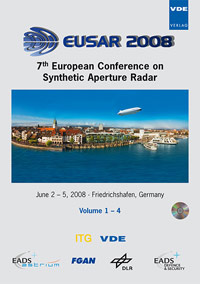PALSAR Interferometric potential for observing the solid earth
Konferenz: EUSAR 2008 - 7th European Conference on Synthetic Aperture Radar
02.06.2008 - 05.06.2008 in Friedrichshafen, Germany
Tagungsband: EUSAR 2008
Seiten: 4Sprache: EnglischTyp: PDF
Persönliche VDE-Mitglieder erhalten auf diesen Artikel 10% Rabatt
Autoren:
Shimada, Masanobu; Ohki, Masato (Japan Aerospace Exploration Agency, Earth Observation Research Centre, Japan)
Inhalt:
PALSAR is an L-band synthetic aperture radar, which is being operated onboard the ALOS since May 2006. During the last two years, PALSAR acquired more than 500,000 scenes using different modes (FBS, FBD, SCANSAR, POL) and almost collected 5 times global coverages in mainly 34.3 degrees off nadir angle. Since the operation termination of the JERS-1 SAR on Oct. 12 1998, L-band SAR has been long waited because Lband SAR is only capable of monitoring the deformation of even the vegetated or forested region. Out of the PALSAR image pairs, we conducted the performance evaluation of the L-band SAR interferometry, especially the coherence and the phase detection performance. This paper summarizes the PALSAR InSAR potential and the current results acquired for the crustal deformation monitoring. L-band SAR contains higher coherence for the longer temporal and spatial separation. The PALSAR data showed that it has quite high performance for detecting the deformation even in the dense forest region.


